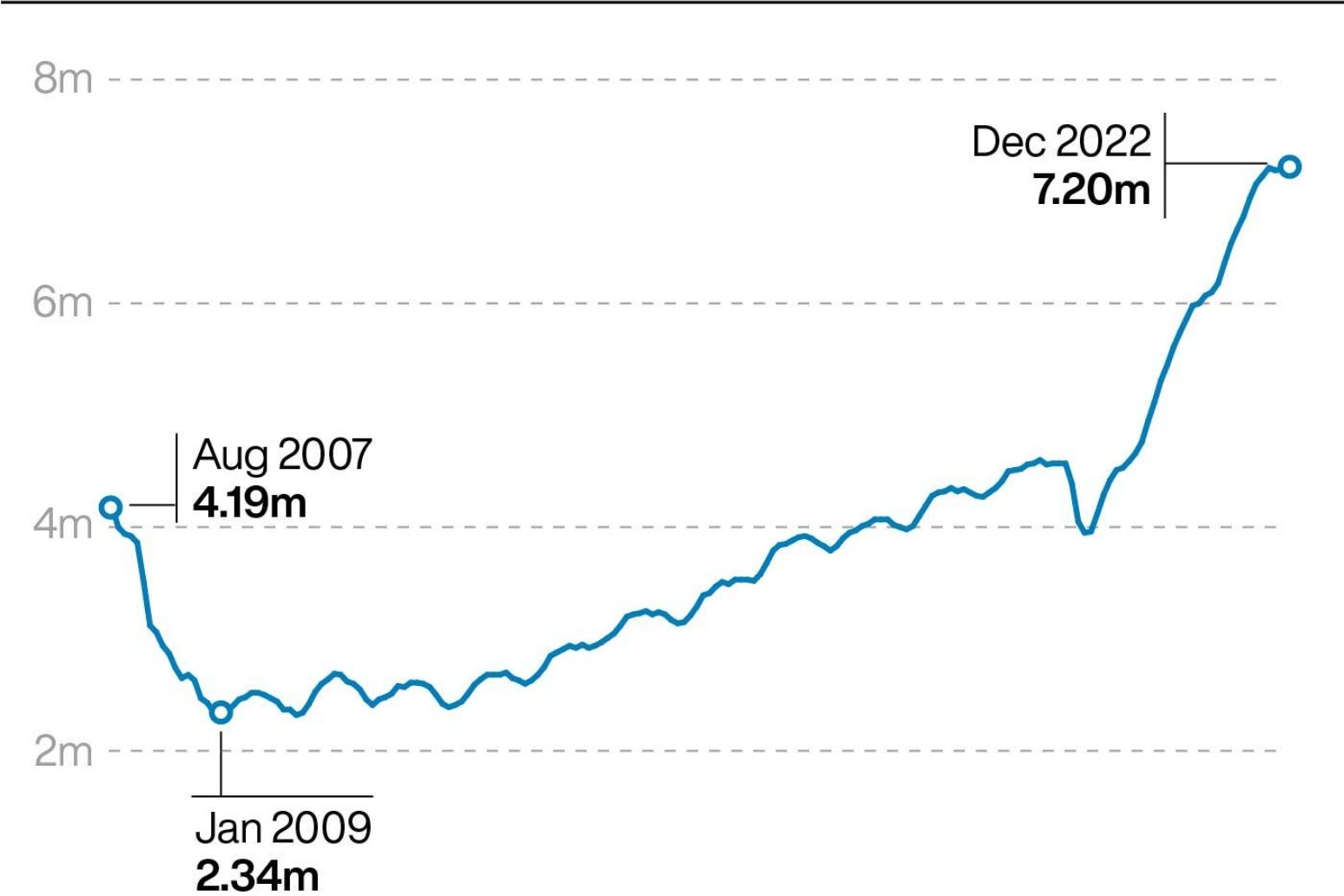
Ambulances in England improve call response times
Ambulances across England have improved their response times for reaching people who called 999, new data shows.
The average response time in January for ambulances dealing with the most urgent category 1 incidents, such as cardiac arrest, was eight minutes and 30 seconds, down from 10 minutes and 57 seconds in December.
The target standard response time for urgent incidents is seven minutes.
Meanwhile, it took an average of 32 minutes and six seconds in January to respond to category 2 emergency calls such as heart attacks, strokes and sepsis, down sharply from one hour, 32 minutes and 54 seconds in December.
However, the response time is still well above the target of 18 minutes.
It is unclear why there has been such an improvement in response times, though factors may include less flu in the community, people keeping away from the health service due to nursing and ambulance strikes, and falling Covid cases among the general population.
The number of 999 calls answered per day in January by ambulance services in England was also the lowest since March 2021.
Services answered 679,517 calls last month, or 21,920 per day, both down a third (33%) on December 2022.
Figures shoe the number of flu patients in hospitals in England has dropped for the fifth week in a row, but levels are still much higher than last year.
An average of 962 patients with flu were in hospital beds each day last week, down 25% from 1,291 in the week to January 29.
It is the fifth week in a row the number of flu patients in hospital has dropped, down 82% from a peak of 5,441 in the week to January 1.
But it is still much higher than the average 37 flu patients in hospital during the same week last year.
Meanwhile, the number of patients attending A&E departments in England fell in January amid industrial action across the health service.
A total of 2m people attended emergency departments in January, down from a record of 2.3m in December.
A&E attendances were also down on pre-pandemic levels, with 2.1m patients attending emergency departments in England in January 2020.
Meanwhile, the number of people waiting more than 12 hours in A&E departments in England from a decision to admit to actually being admitted has dropped by more than a fifth in a month.
It comes as new data shows 41,425 hospital appointments were rescheduled following strike action by ambulance workers and nurses on Monday and Tuesday.
Elsewhere, the number of people in England waiting longer than six weeks for a key diagnostic test has risen to its highest level since the summer of 2020, the NHS England shows.
Some 481,924 patients, 31.3% of the total, were waiting longer than six weeks for one of 15 standard tests in December, including an MRI scan, non-obstetric ultrasound or gastroscopy.
This is up from 427,968 the previous month, 26.9% of the total, and the highest number waiting longer than six weeks since July 2020 when the total was 489,797 (39.6%).
Commenting on the figures, Tim Gardner, senior policy fellow at the Health Foundation, said: ‘While falling rates of flu and Covid-19 have provided some respite, today’s figures show the NHS remains under severe strain.
“Pressures are being felt right across the health and care system but are most acute in urgent and emergency care.
“Ambulance response times improved substantially in January 2023. A&E waiting times also rebounded from last month’s record low, although over 482,000 people still waited over four hours.
“While these are grounds for cautious optimism, performance is still well below where it should be and worse than before the pandemic.”
Saffron Cordery, deputy chief executive at NHS Providers, said: “This has been one of the toughest winters for the NHS, but the hard work of trust leaders and their staff is leading to promising results.
“Despite demand for urgent and emergency care services remaining very high, ambulance response times have improved considerably.
“However, we’re still not in the clear: waits of 18 months or more have gone up, and trust leaders are deeply concerned that other pressures – including staff shortages and escalating strikes – could not only obstruct future gains but derail ones already made.
“Bed occupancy is too high, still above what’s safe, despite more beds being made available with pressures also on mental health and community services.
“Trust leaders are also worried about the strain that delayed discharges are putting on the entire system.
“Currently, 14,000 medically fit patients are unable to leave hospital, in part due to the need for more investment in social care and community services.”
NHS national medical director, Professor Sir Stephen Powis said: “Today’s figures show that despite ongoing pressures across the health service, including industrial action, NHS staff are continuing to work flat-out to deliver the best care for patients, with ambulance response times improving last month as the NHS continued to progress on its winter plan.”
He said the number of people in hospitals with vomiting bug norovirus has jumped significantly, showing viruses other than flu and Covid are still a concern.
Published: by Radio NewsHub